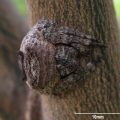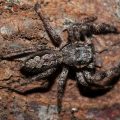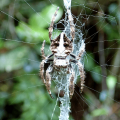Table of Contents
More and more people are being open and adore having barking spider as their pets. Even with their fear-inducing look that most people associate them to be; others on the other side of the spectrum think spiders are fascinating creatures that you should give yourself a try. They are enchanting to watch and do not demand a lot of care; they are neat, quiet, cost-effective to maintain; and only require a small amount of socialization; they do not mind being lonely; however, they should be taken seriously as any other pet species should. Responsible pet ownership does not dismiss one species over the other.
Barking spiders are becoming more and more popular to pet. If you are planning on doing so, or a beginner in petting a barking spider; then here are some facts that might be useful to know what barking spiders are; to get you started on your own petting a spider journey:
Keep in Mind!
- Barking spiders, in terms of their physical appearance, are big and hairy. As with any other spiders, they too have two body segments, eight legs and two palaps on the front used for moving; and touching their prey.
- Primitive spiders are what barking spiders are known for. They are called Mygalomorphs, they are known to be the longest lived spiders and the least evolved spiders. It’s heavily built and are moving slowly, and have gill-like lungs that need humidity. They spent most of their lives mainly digging, and love moist underground as their habitats.
- Barking spider produce their “barking” sounds by stroking rows of spines on their palaps across the spines on their lower jaw. The sounds produced are to scare off predators.
- Barking spider often to be found in deserts, they live in burrows that often get occupied by flooding. The hairs in their body traps air bubbles during floods and those prevent them from drowning.
- Barking spider have what experts called brush feet; they have claw tuffs and a film of oil created from their special gland. These three combined gives them an ability to climb smoothly on any vertical surface.
- Barking spiders do not have teeth to chew their food; so they depend on their venom to soften their prey and use their stomach, aka sucking stomach to draw in the meal.
Keeping them as your pet
They are very quiet and will spend most of the time hidden.
For instance; if you lay their prey in their cage you might think that they’re gone but in reality; they are just conducting a dramatic scene to secure their prey. And because of their brush feet, they can certainly be called Spiderman; since they can climb in rocks, glass, sheer surfaces, silky surfaces, and slippery ones. Make sure to always lock their cage.
They are venomous, and have large fangs
The bite is powerful enough to puncture a leather glove or a fingernail. They are not meant to be handled. Their venom is hazardous to our cats and dogs; a bite of them to our animal is certain to be fatal within an hour.
You should not underestimate their strength
Barking spiders are very strong. Make sure that the lid of their cage is really well secured because more likely if not; they are going to push them until they are out; and that is what we are avoiding happening. They can jump a large height, so always be alert and; cautious in times when you might be giving an opportunity to do so; they can jump out of their cage and might bite your hand.
As for their cage, you should buy the ones intended for barking spiders for safety purposes and responsible pet ownership. You cannot just do a DIY project since their habitat plays a vital role in their well-being as well. Pet stores and spider enthusiasts are often knowledgeable and store and sell those cages.
Feeding your barking spiders is not complicated
They certainly will eat anything that is smaller than them. You can feed them grasshoppers and crickets, for they are the ideal ones but you can also opt for cockroaches. There exist spider feeds in pet stores, it is great for them as well, but it can be really expensive. Buying drinking equipment made specifically for spiders is encouraged to ensure that they would not drown in their cage.
Their cage should manifest in humid microenvironments
Not too dry and not too wet. There exist tutorials on how to achieve this; by spider enthusiasts and we encourage you to go in-depth; and detail by detail to ensure that you are doing it right; and would not miss any points whatsoever.
Conclusion
To wrap things up, barking spiders are really not for kids to pet since it will compromise their safety; and kids can make irresponsible actions that might do more harm than good. For adults, barking spiders can be a fascinating animal to take care of. Owners and spider enthusiasts often preach about how dramatic their journey of petting these has been. Remember to always practice responsible pet ownership, always research and educate yourself and assess yourself as to your readiness and capability to engage in this journey.






 Author and long-time animal lover. Sharing knowledge on pet care through experience and the written word.
Author and long-time animal lover. Sharing knowledge on pet care through experience and the written word.